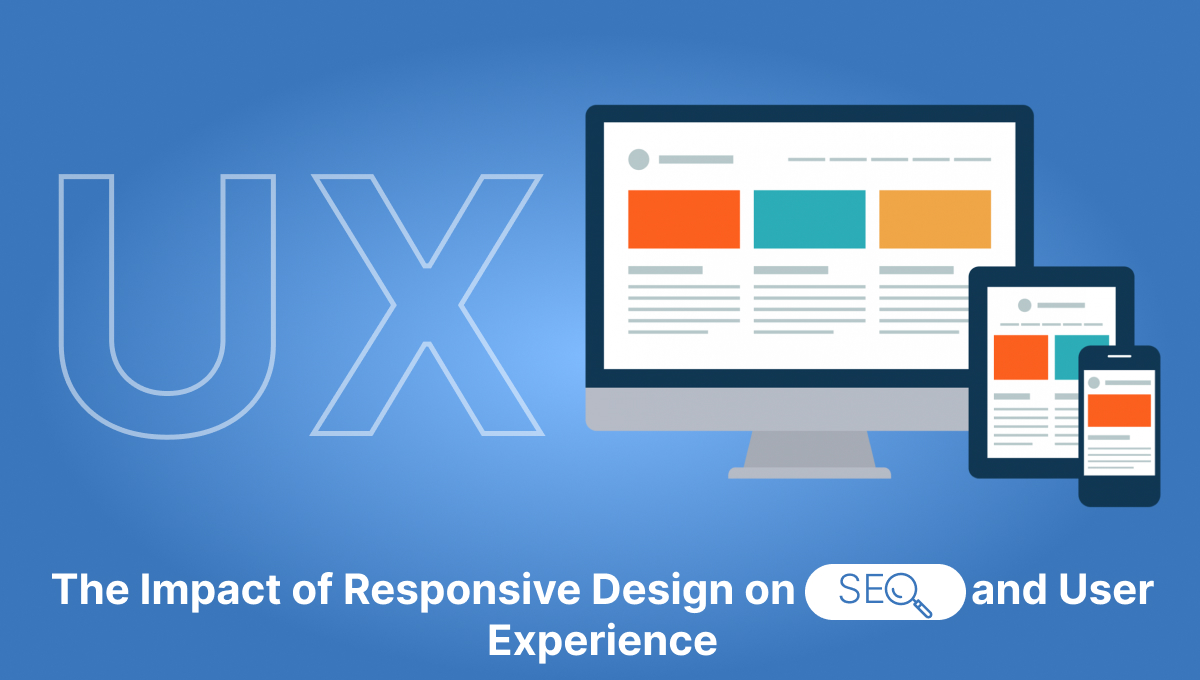Has this ever happened to you: you go to a website from your mobile device only to find tiny text, extra-large images, or elements that need to load correctly? This is the overly familiar experience of too many, reflecting a critical issue in today’s digital environment related to responsive design. Ensuring your website is adaptable is no longer an option; it is a need and mandatory as well. But how does this impact SEO and user experience?
In the digital age, where mobile internet use has outperformed desktops, responsive design is more critical and crucial than ever. Of course, it’s no longer solely about making your website look nice on other devices; it’s also about a smooth user navigating experience that may greatly influence your success on search engines. Let’s check how responsive web design impacts SEO user experience and why it should be at the top of any digital strategy.
What Is Responsive Web Design?
A responsive design is a website development process that allows the website to change layouts, images, and functionality on the go. So basically, the design would respond and provide an optimal viewing experience whether consumers view a website through a desktop, tablet, or smartphone; scale, hide, or rearrange information based on devices.
This is done using the flexible grids, fluid images, and media queries contained in the website’s CSS. The focus is on a user-friendly experience where no zooming or horizontal scrolling is required, regardless of any device. Essentially, what is being referred to is the development of flexible, accessible websites whereby the experiences of all users are almost similar and delightful.
How Responsive Design Impacts SEO
- Improved and Enhanced Mobile Usability
- Better Page Loads
Improved and Enhanced Mobile Usability
One of the most significant advantages of mobile website design in Melbourne regarding SEO is improved mobile usability. Search engines, especially with the adoption of mobile-first indexing, stress that a website should be friendly to mobile devices.
That means that Google’s algorithms index and rank websites based on their mobile version first. Mobile-friendly websites in Melbourne will more likely keep the visitors longer, with reduced bounce rates and longer session times, positively impacting SEO.
Read More: How to Choose the Right Web Design Company for Your Business?
Better Page Loads
Websites that are not optimized for various devices, especially mobile devices with slower internet connections, usually require a faster load time. Responsive Web Design Melbourne has inbuilt features such as image optimization, proper content scaling, and efficient coding techniques that further provide better load times. Faster sites essentially mean cleaner search engine rankings and fewer bounce rates.
User Experience: Foundation of Responsive Design
- Consistency Across Devices
- Higher Engagement, lower Bounce Rates
Consistency Across Devices
One of the things that responsive design is supposed to accomplish is device agnosticism. Users expect their desktop arrangement at work to reappear on their phones while traveling between work and home. That said, most users turn away from things that do not work consistently out of frustration.
That ensures a consistent User Interface, which further makes it easier for users to browse the website for information that may be required to take a desired action—purchase, form submission, and content reading. Properly designed responsiveness on the website will ensure great experiences, high rates of engagement, better conversion rates, and brand loyalty.
Higher Engagement, lower Bounce Rates
Here are some ways in which responsive design directly influences user engagement and bounce rates: The more accessible and more hassle-free it is for users to enter your website using any gadget, the more they will remain on the website, the more pages they will view on your site, and the more they will engage with the content of the site as well.
A responsive website keeps users engaged and drives them further down the funnel, probably helping to improve these metrics and, therefore, SEO and the general ranking of the web page.
Responsive Design as a Long-Term Investment
Future-Proofing Your Website
Responsive design is a long-term investment against new devices and screen sizes that appear almost daily; it future-proofs your website. By developing a modular and adaptive place of business, you ensure that it will stay accessible and of great value for years to come, regardless of any technology change.
Final Thoughts
Responsive design is key to improving both SEO and user experience by making websites adaptable to all screen sizes. With responsive design, users enjoy a smoother, more intuitive experience, reducing bounce rates and improving engagement. A mobile-friendly site that loads quickly will rank higher in search engines and lead to greater customer satisfaction and conversions. As the web continues to be accessed across various devices, responsive web design has become essential for staying competitive and relevant.
Ready to optimize your website for SEO and user experience? Contact our team today to implement responsive design that enhances engagement, boosts rankings, and drives conversions for your Melbourne business.


